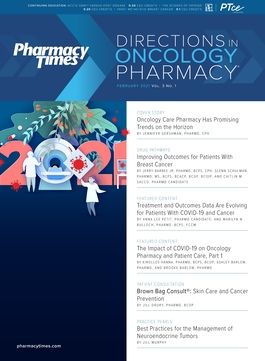Clearing the Confusion about Dosing Immune Checkpoint Inhibitors
Two expert speakers at the 2020 ASHP Midyear Clinical Meeting and Exhibition presented Immune Checkpoint Inhibitors: Resolving Dosing Confusion to Better Care for Patients With Cancer, a virtual symposium.
PTCE would like to acknowledge Bristol Myers Squibb for their generous support of pharmacist education.
Two expert speakers at the 2020 ASHP Midyear Clinical Meeting and Exhibition presented Immune Checkpoint Inhibitors: Resolving Dosing Confusion to Better Care for Patients With Cancer, a virtual symposium that provided a thorough review of both dosing strategies and management of immune-related adverse events (irAEs) for these agents.
Jessica Michaud Davis, PharmD, BCOP, CPP, compared fixed dosing of immune checkpoint inhibitors (ICIs), which may offer a safe, convenient, and potentially cost-effective dosing strategy, with weight-based dosing designed to optimize pharmacokinetic/ pharmacodynamic parameters. Rather than dosing at the maximally tolerated dose, Dr Davis noted studies of ICIs may use either an effect marker or a pharmacodynamic marker to determine a biologically effective dose. She explained that monoclonal antibodies have a volume of distribution similar to blood plasma and extracellular fluids; body composition and organ function have little impact on ICI concentration. With the exception of ipilimumab, there is no relationship between ICI exposure and safety. Only avelumab and ipilimumab show a possible correlation between higher doses and disease response; the other ICIs demonstrate a flat exposure-response relationship. Dr Davis presented various dosing schedules for ICIs, including a once-monthly administration schedule for nivolumab and an every-6-week administration schedule for pembrolizumab recently approved by the FDA. She wrapped up her portion of the presentation by describing the implications of ICI therapy during COVID-19 and provided some strategies for determining treatment strategies.
Jennifer Kate Piccolo, PharmD, BCOP, then illustrated the mechanism and incidence of irAEs associated with ICIs, noting irAEs are most frequently observed with CTLA-4 inhibitors and least often with programmed cell death-ligand 1 (PD-L1) inhibitors. Dr Piccolo explained the incidence and severity of irAEs is greater with combination ICI therapy compared with monotherapy, and the incidence and severity may also be influenced by tumor type and dose. She described the timeline for presentation of irAEs, emphasizing that although some are observed as early as the first 24 hours after treatment initiation, others may experience delayed reactions months to years after treatment have been reported. Dr Piccolo highlighted similarities and differences by target organ of several guideline resources for management of irAEs. In general, irAEs are managed by holding ICI therapy, administering corticosteroids, and considering alternative immunosuppression therapy based on organ affected:
- Colitis ➡ infliximab
- Hepatotoxicity ➡ mycophenolate
- Pneumonitis ➡ infliximab, mycophenolate, intravenous immunoglobulin, or cyclophosphamide
- Musculoskeletal ➡ methotrexate, azathioprine, mycophenolate, or tocilizumab
- Hematologic ➡ rituximab, cyclosporine, or mycophenolate
- Cardiac ➡ local cardiac transplant rejection protocols
Dr Piccolo provided data supporting rechallenging patients with an ICI following irAEs, citing both disease responses and manageable irAEs. She concluded the presentation by reviewing the role of the pharmacist in reinforcing education, monitoring clinical and laboratory data for signs and symptoms of irAEs, and assisting in immunosuppression selection, dosing, and tapering.

